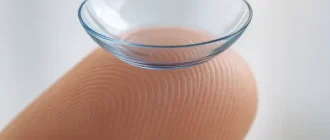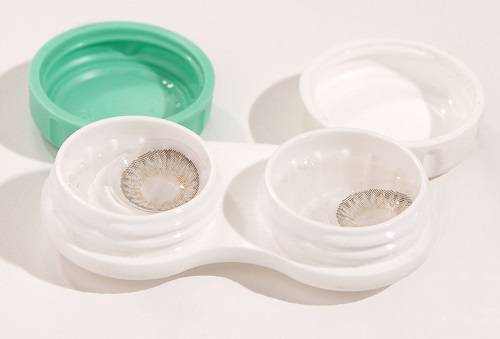Photochromic lenses, also commonly known as transitions lenses or adaptive lenses, are not just a cool trick your glasses can do—they’re a technology-driven way to protect your eyes in a variety of lighting conditions. These lenses adapt automatically to changing light, darkening when you step outside and becoming clear indoors. But there’s a lot more to them than meets the eye. Let’s dive into what makes photochromic lenses unique, who benefits most from them, and what some experts have to say about their effectiveness.
The Science Behind the Tint
Photochromic lenses contain light-sensitive molecules that respond to UV light. These molecules undergo a chemical change when exposed to sunlight, causing the lenses to darken. UV light is the key trigger here, meaning these lenses don’t react to visible light from artificial indoor lighting—a common misconception.
The tint adjusts proportionally, depending on how much UV exposure there is. For example, a bright, sunny day results in a darker lens, whereas an overcast day may create only a subtle change. This adaptive feature helps maintain comfortable vision in environments with fluctuating light levels.
Studies show that these lenses block up to 100% of UVA and UVB radiation. This statistic is a major selling point for individuals looking to add an extra layer of protection to their eyewear. Experts agree that photochromic lenses are a great defense against cumulative UV damage, which can lead to conditions such as cataracts or macular degeneration.
Types of Photochromic Lenses
Photochromic lenses are more than just one-size-fits-all. There are several different brands and variations, each with its own set of characteristics.
- Transitions Signature Lenses: These are the most well-known version, suitable for daily wear and capable of adjusting to a wide range of lighting conditions. The darkening process takes about 30-45 seconds, while fading back to clear indoors can take up to 2 minutes.
- Transitions XTRActive: These are designed for people who spend a lot of time outdoors. They have a higher baseline tint, meaning they are slightly tinted even indoors. They offer more UV and blue light protection but are generally not ideal for those who need crystal-clear lenses indoors.
- Drivewear: These are a specialized type of photochromic lens made specifically for driving. Unlike standard photochromic lenses, these lenses can activate behind a car windshield, which typically blocks UV light. They’re ideal for individuals who spend hours on the road.
Advantages and Disadvantages: What Do the Numbers Say?
Market research suggests that roughly 25% of eyeglass wearers choose photochromic lenses, but the reasons behind their popularity are varied. Let’s break down the major benefits and potential drawbacks.
Benefits:
- UV Protection: As mentioned earlier, photochromic lenses block 100% of UVA and UVB rays, making them a great option for protecting your eyes from harmful radiation.
- Convenience: You don’t have to carry around two pairs of glasses—one for inside and one for outside. In a 2021 survey, 75% of users reported that convenience was their primary reason for choosing photochromic lenses.
- Blue Light Blocking: Some newer versions of these lenses, like the XTRActive, also filter out harmful blue light from digital screens, which is important given that 60% of adults spend more than 6 hours a day in front of a screen.
Drawbacks:
- Transition Time: While transitions lenses are quick to darken, the fading back to clear can take longer than expected, especially in cold weather. 40% of wearers in a recent study said that they found the transition time back to clear “to be slower than ideal.”
- Ineffectiveness in Cars: Standard photochromic lenses do not darken inside cars because windshields block the majority of UV light. This limitation can be a dealbreaker for some, especially those who frequently drive during the day.
Common Scenarios: When Do They Work Best?
Outdoor Sports and Activities: For those who enjoy activities like biking, hiking, or even a casual walk in the park, photochromic lenses are excellent. They provide instant UV protection and adjust to the conditions, helping prevent eye strain. According to Dr. Rachel Martin, an optometrist with over 15 years of experience, “Photochromic lenses are great for sports enthusiasts who need varying levels of protection without switching eyewear. They reduce glare and minimize the need for sunglasses.”
Office Work and Daily Commutes: If your day involves spending time both inside and outside, these lenses save you the hassle of switching between prescription sunglasses and regular glasses. However, as Dr. Jonathan Hughes, an ophthalmologist, points out, “If you spend most of your day in an office or a car, the value of photochromic lenses is reduced. They are more effective for those who face frequent outdoor exposure.”
Medical Considerations: Patients with light sensitivity can benefit from photochromic lenses as well. For those dealing with conditions such as migraines or post-cataract surgery, the adaptability of these lenses can help reduce light-induced discomfort. Dr. Elaine Simmons, a neuro-ophthalmologist, has seen significant improvement in patients with chronic light sensitivity. “Photochromic lenses don’t cure the condition, but they significantly improve quality of life by managing light exposure,” she explains.
Advice From Our Editorial Team
Photochromic lenses can be a game-changer for many people, but they’re not for everyone. If you spend a lot of time outdoors or just want to simplify your life by avoiding multiple pairs of glasses, they are definitely worth considering. On the other hand, if your lifestyle is primarily indoors or in vehicles, you might find standard prescription glasses coupled with a separate pair of sunglasses to be a more versatile choice.
One tip we always give our readers: try before you commit. Many optical stores allow a trial period or a warranty period in case you find the transition speed or the tint level unsatisfactory. Don’t hesitate to ask questions about the type of photochromic lenses—whether they offer blue light protection, what their transition times are, and how effective they are for driving. The more informed you are, the more satisfied you’ll be with your choice.





